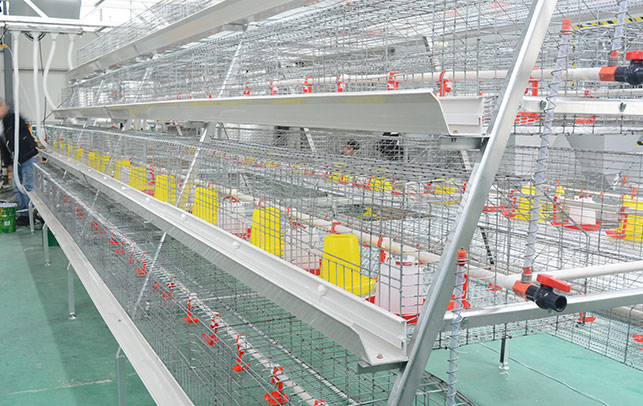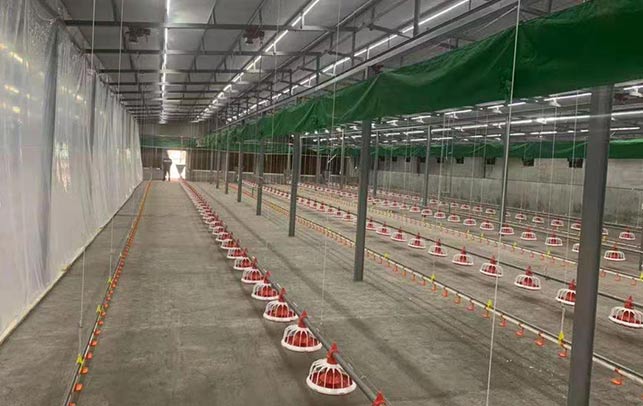Step-by-Step Poultry Farm Setup in Kenya
Time : 2025-03-27
Are you thinking of starting a poultry farm in Kenya? Great choice! Poultry farming is a lucrative business venture that can provide a steady income and contribute to food security. But before you dive in, it’s important to have a solid plan in place. In this article, we’ll walk you through the step-by-step process of setting up a poultry farm in Kenya. Let’s get started!
Step 1: Market Research and Business Plan
First things first, you need to do your homework. Research the local market to understand the demand for poultry products. Find out what types of birds are popular, the prices they fetch, and the competition in your area. This will help you make informed decisions about what to raise and how to market your products.
Once you have a good understanding of the market, it’s time to draft a business plan. This should include your goals, target market, financial projections, and marketing strategy. A well-thought-out business plan will not only guide you through the setup process but will also be crucial if you need to secure financing.
Step 2: Choose the Right Location
The location of your poultry farm is crucial. You need a place that is accessible to your market, has a reliable water supply, and is远离 natural hazards like flooding or wildlife. Look for a location that is not too far from urban areas to ensure easy access to feed and labor.
Step 3: Legal Requirements and Permits
Before you start building, make sure you understand the legal requirements for poultry farming in Kenya. This includes obtaining the necessary permits and licenses. You’ll need to register your farm with the Kenya Veterinary Services (KVS) and ensure that you comply with all health and safety regulations.
Step 4: Designing Your Farm
The design of your poultry farm should be efficient and easy to manage. Consider the following aspects:
– Brooder House: This is where chicks are kept for the first few weeks. It should be well-ventilated, insulated, and equipped with heating systems.
– Grow-out Houses: These are for young birds that are not yet ready for market. They should be large enough to accommodate the birds comfortably and should be well-ventilated.
– Roosting Areas: Roosts should be clean and provide enough space for the birds to roost comfortably.
– Feeding Areas: Design areas where birds can access feed without contamination.
– Manure Management: Plan for a system to manage and dispose of manure effectively.
Step 5: Building the Infrastructure
Once you have your design in place, it’s time to start building. Here are some key considerations:
– Materials: Use durable materials that can withstand the weather conditions in Kenya.
– Ventilation: Ensure that your poultry houses are well-ventilated to prevent respiratory diseases.
– Water Supply: Install a reliable water source, such as a borehole or well, and ensure it is accessible to the birds.
– Electricity: Power is essential for lighting, heating, and cooling systems. Make sure your farm has a reliable electricity supply.
Step 6: Selecting and Raising Your Birds
Choose the right breed of birds for your farm based on your market research. Some popular breeds in Kenya include the White Leghorn, Rhode Island Red, and Buckeye. When raising your birds, keep the following in mind:
– Feed: Provide a balanced diet that meets the nutritional needs of your birds.
– Health: Regularly monitor the health of your birds and vaccinate them against common diseases.
– Sanitation: Keep your poultry houses clean and disinfect them regularly to prevent disease outbreaks.
Step 7: Marketing Your Products
Once your birds are ready for market, it’s time to sell them. Consider the following marketing strategies:
– Direct Sales: Sell directly to consumers through farmers’ markets, local shops, or your own farm gate.
– Wholesale: Establish relationships with wholesalers and retailers who can purchase your birds in bulk.
– E-commerce: Utilize online platforms to reach a wider market.
Step 8: Continuous Improvement
Poultry farming is a dynamic industry, and it’s important to stay informed about the latest trends and technologies. Regularly review your business performance and make adjustments as needed. Attend workshops, read industry publications, and network with other poultry farmers to stay ahead of the curve.
Conclusion
Setting up a poultry farm in Kenya can be a rewarding venture if done correctly. By following these step-by-step guidelines, you’ll be well on your way to a successful poultry farming business. Remember, success in poultry farming is not just about raising healthy birds; it’s also about understanding the market, managing your resources effectively, and staying adaptable to change.











